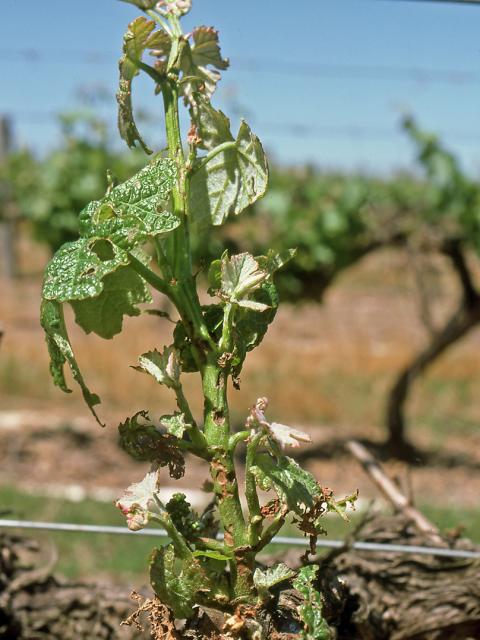Monitoring
Damage may be isolated, so inspecting a representative sample of vines and host weed species across the vineyard is necessary. Areas where garden weevils were a problem the previous season should be included.
Larvae and pupae
If monitoring for the soil borne larvae and pupae, commence in late winter to early spring as soil temperature increases and these stages become larger and more readily seen as they develop. Examining a spadeful of soil near the base of vines and under host weed species in late winter/early spring may reveal garden weevil larvae actively feeding on vine and weed roots around budburst. The ease with which larvae are found is a good indication of subsequent adult abundance and consequently the severity of damage by adults later in the season.
If half of the spadefuls of soil across a block have no garden weevil larvae or pupae while the other half of the soil samples have only one or two, garden weevil is unlikely to be a problem. If larvae are readily found - an average of five or more per spade of soil - the potential for a problem increases and control options should be considered.
Continued weekly checks near the base of vines and host weeds to determine the proportion of larvae and pupae should help to indicate the timing of emergence of adults: the higher the proportion of pupae the closer to adult emergence. As pupae approach emergence they become darker.
Adults
Vines may be monitored for adult emergence by wrapping a piece of single faced corrugated cardboard 10cm wide just below the crown of vines. Place bands in areas identified as hot spots. Inspect for adults sheltering in these bands every seven days.
Garden weevil adults may be monitored by scraping the soil at the base of vines, under bark and in the crotch of branches where they shelter during the day. Inspection at night may reveal the adults actively feeding.
Once weevils emerge, they commence to feed and the vines are the most favoured food. Weeds may also be chewed. Water shoots of vines will be attacked first followed by folaige near the crown before they move along cordons and attack bunches.
Characteristic signs of leaf feeding by garden weevil adults on water shoots and the crowns of vines are a useful guide to the extent and severity of attack across vineyard blocks.




